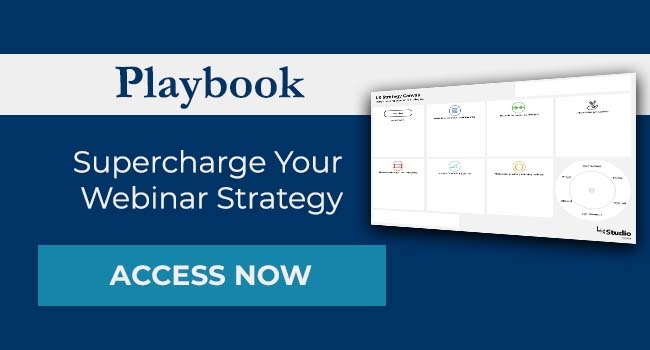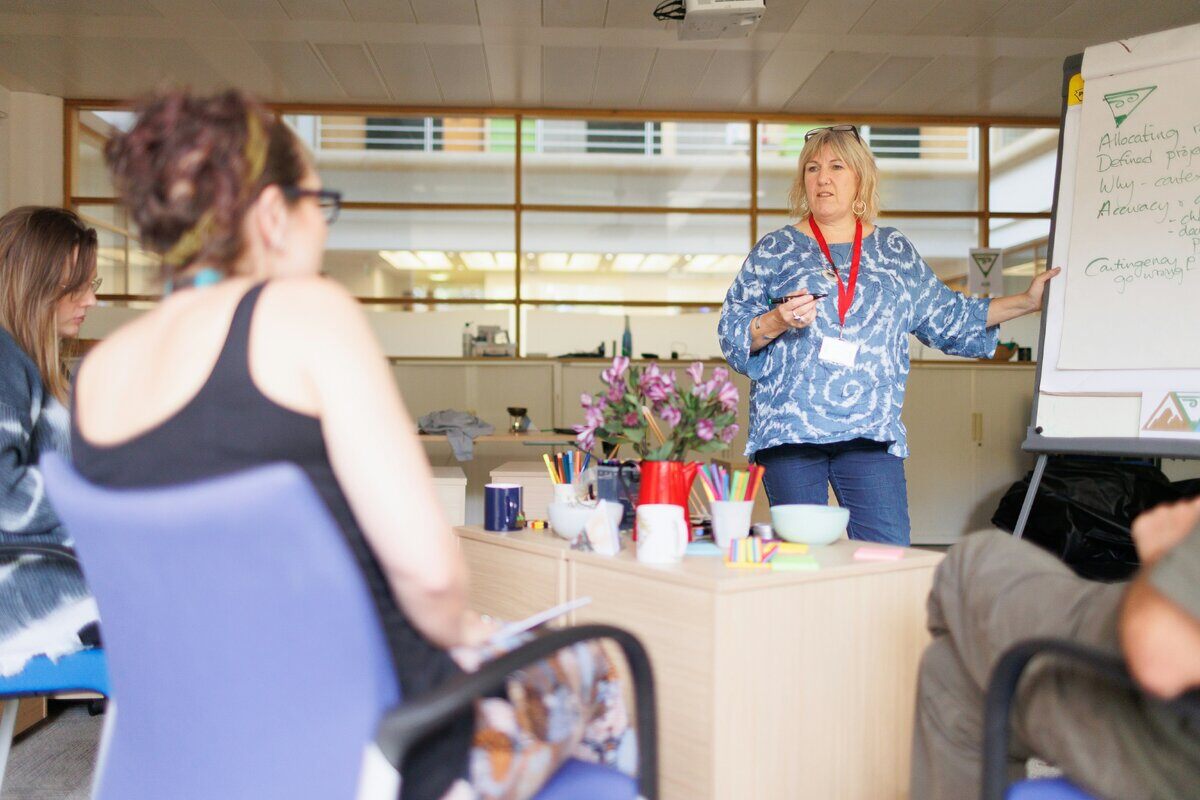
Aligning Learning With Business Outcomes: Why Strategy Must Come First
One of the most important things to understand about organizational performance training is that not all programs are created equally.
It's very easy to look at a laundry list of stats pertaining to the training ROI you're supposed to unlock and get excited.
According to one recent study, over 90% of employees say that they consider any form of workplace learning that they receive to be useful.
A massive 66% of employees say that they find on-the-job training most beneficial when learning new skills, and 92% of employees think that workplace training also impacts their job performance positively.
Well-trained employees feel more engaged, they're better equipped to do their jobs, and are much more likely to give their all to the greater good.
What's not to like, right?
But then again, you may be one of the many, many organizations out there that has gone to enormous trouble and put forth a major financial investment to institute such a training program, only to fail to unlock anything close to resembling the benefits outlined above.
The major mistake that so many businesses make - that they don't realize until it's far too late - is one of focus.
They teach people skills in a broad sense, but not as they relate to the very real (and precise) set of duties these people will be asked to complete on a daily basis.
They're transferring information, yes - but not what is needed to actually apply that information to their daily lives.
In other words, they prioritize the idea of learning more than the business outcomes that are supposed to be achieved as the result of that learning.
Yes, people learn new things - but they aren't necessarily the right things for the right job at exactly the right time.
Thankfully, all hope is not lost.
Whenever you design any type of learning strategy that is supposed to usher in a new era of business outcomes, the strategy itself must come first.
Don't start with a job description or a vague idea of the future and hope that you can design a course that will be meaningful.
Start inward with your organization - what do you need to be able to do that you can't right now? - and work your way backwards from there.
Getting to this point isn't necessarily difficult, but it will require you to keep a number of important things in mind along the way.
Why Alignment Matters
In today’s fast-moving business environment, training programs can no longer afford to be created in a vacuum.
When learning initiatives are misaligned with business goals, they become a cost center instead of a growth lever.
The value of alignment isn’t just "something that's nice in theory" - it’s practical, measurable, and often the difference between a successful initiative and wasted resources.
When learning and development are tightly aligned with business strategy, training serves as a catalyst for performance improvement.
Employees gain the skills they actually need to do their jobs better, and the business sees real results - higher sales, faster onboarding, improved customer satisfaction, and more.
This will vary depending on the business and industry, but the overall theme will remain the same.
Common Pitfalls In Training Design
One of the most common pitfalls is designing training based on assumptions rather than data or strategic input.
For example, a company might create a multi-module customer service course simply because turnover is high, without investigating whether the real issue is product complexity or misaligned incentives.
Another frequent issue is over-reliance on generic training content.
While off-the-shelf solutions may be convenient, they often miss the mark in addressing specific business challenges or industry nuances.
Strategy As A Starting Point
To avoid these and other related issues, always start with the strategy.
What is the company trying to achieve this month?
This year?
In the next five years?
These strategic goals should serve as the foundation for training design.
For example, if a company is expanding into a new market, training might focus on cultural competence, regional regulations, or language skills.
If the goal is digital transformation, then upskilling in specific technologies or agile methodologies becomes the priority.
How To Align Learning Objectives With Business Goals
This part of the process may sound challenging, but it can be easily broken down into a series of smaller and more manageable steps.
These include taking a look at key areas like the following.
Identify Key Business Drivers
The first step in alignment is identifying what’s driving the business. Is the company focused on increasing customer retention?
Are they going to be launching new products and want to make sure they're prepared?
Is the overall goal about reducing operational inefficiencies?
Work closely with stakeholders, including but not limited to sales leaders, product managers, HR, and executives, to understand their pain points and priorities.
Map Learning Objectives To Measurable Outcomes
Once you understand the business drivers, it’s time to translate them into actionable learning objectives.
This means going beyond vague goals like “improve communication skills” and aiming for specific, measurable targets such as “reduce customer onboarding time by 20%.”
Make sure that there's a clear line of sight between what learners will do differently and how that behavior supports the business.
Case Study Example: Manufacturing Client
At LX Studio, this is something that we've seen firsthand with a manufacturing client we partnered with.
Not too long ago, a leading HVAC manufacturer approached us with a significant challenge.
Despite having comprehensive technical information about their products, they were struggling to effectively train their distributors, installers, and service technicians.
Their existing materials were rich with information... but that could rarely be applied to the real world.
Thankfully, we were able to help.
Business Goals: Sales, Support, Installation
During the initial phase, we consulted with the client to understand not just their training needs, but their broader business goals.
It wasn't just that they needed effective "training."
They wanted to reduce warranty claims, increase proper installations, and build stronger relationships with their distribution network.
We then helped identify specific learning outcomes that would drive business goals, helping to create alignment among technical experts, the sales team, and organizational leadership around exactly what success would look like.
Learning Tactics Tied to Results
During the learning phase, we utilized a wide range of different engaging forms of content, including but not limited to video demonstrations, interactive troubleshooting scenarios, hands-on practice verification, knowledge checks with performance feedback, and more.
Following the implementation of our approach, this manufacturing client observed meaningful improvements across several key metrics, including completion rates, a substantial reduction in warranty claims, and more.
This is largely because we started with the learning strategy, not the content itself.
By focusing first on business goals and learning outcomes, the team at LX Studio was able to guarantee that training addressed real needs, no matter what.
Measuring Success
Never let yourself forget that designing aligned training is only part of the equation. You also need to measure whether it worked.
This is something that you can do in a few different ways depending on your point of view.
KPIs and Performance Metrics
Generally speaking, you should start by identifying both your leading and lagging indicators of success.
Leading indicators are those tangible things that might include significant improvements in training completion rates, higher knowledge check scores, or even just things that you're observing in day-to-day conversations.
Lagging indicators, on the other hand, are those actual business outcomes - the types of things that aren't just going to change overnight.
This includes things like increased sales, lower volumes of support calls, or even meaningfully improved customer satisfaction scores.
Long-Term Business Impact
Another important lesson that you never want to let yourself forget is that while short-term wins are great, sustained impact matters more.
Are the improvements holding steady after six months?
Are teams adopting new behaviors long-term?
In other words, the type of training that we're describing above is not something that you "do once and forget about."
You need to start with a strategy and align it to your business outcomes.
You need to execute the strategy you just put in place.
You also need to keep executing it to make sure that it's always improving and that your business itself is always moving in the right direction.
Post-training check-ins, performance reviews, and even pulse surveys can help monitor ongoing impact.
You might also consider creating a dashboard that integrates training data with business analytics for a comprehensive view.
This way, if some of your numbers are on the decline or if things aren't moving in the direction you want them to, you'll know about it immediately so that you can do something about it just as quickly.
All this helps to underline the point that training is so much more than just another box to check.
It's not a "necessary evil" or a "cost of doing business."
It can and should be a strategic tool that propels you.
But to unlock its full potential, it must be aligned with the business’s goals, grounded in measurable outcomes, and evaluated for real impact.
By making alignment a priority, learning leaders can turn education into execution - and help drive the business forward.
In the end, one of the biggest mistakes that you can make as an organization involves assuming that there is some "one right learning strategy" that you need to follow for success.
All you need to do is find some mythical, pre-existing roadmap to follow, and all your business outcomes will lock into place.
Every organization is different from the next.
If you took a look at your closest competitor, you'd likely be looking at a very different organization from your own, even though you largely do the same thing.
You might have similar goals, but they're not identical, and they certainly don't need to be accomplished in the exact same way.
Essentially, you need a custom approach to education, which means you need to essentially invert the process that most people are used to.
Start with the business outcomes you're trying to achieve - that will help uncover exactly what it is you need to teach.
Then, look at the audience you're working with.
That will help underline not what they need to learn, but how.
Then, you can put together the learning strategy needed to connect where you are with where you hope to be, which in and of itself is the most important benefit of all.
If you'd like to find out more information about aligning learning strategy with business outcomes, or if you have any additional questions about ongoing training and education that you'd like to go over with someone in a bit more detail, please don't hesitate to contact the team at LX Studio today.






